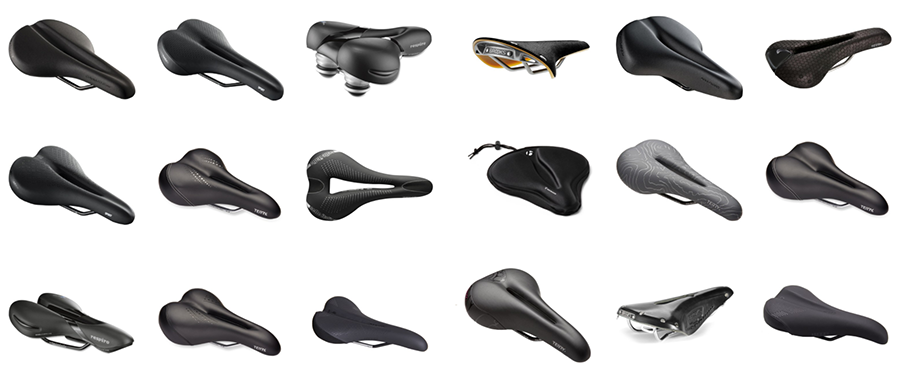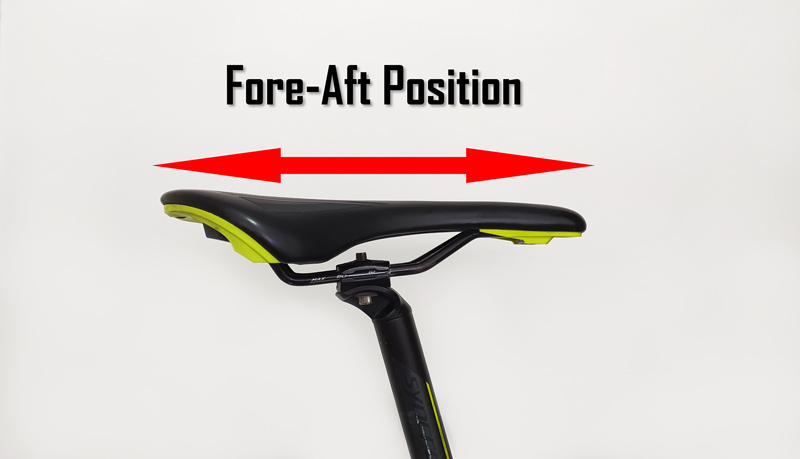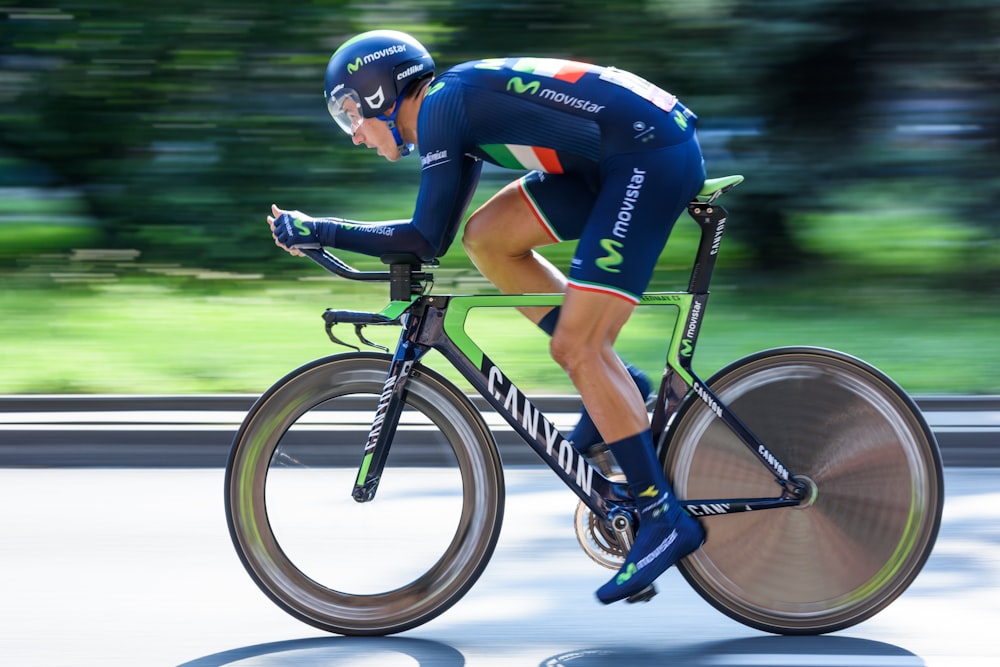How to Choose the Right Bike Saddle (That Really Fits)?
Choosing the right saddle to fit your body and preferences is key to getting the most enjoyment out of every ride. The wrong fit can be uncomfortable or even painful, often leading to numbness in the undercarriage.
The correct saddle fit should allow you to comfortably ride for long durations, over varied terrains, and with good riding position and efficiency. Once you have adjusted to it, regular riding should not cause any pain or discomfort.
Because saddles come in numerous shapes, sizes, styles, and prices, it can be a complicated process to pick the right one. To help you in your search, we have researched all the ins and outs of saddle fit and design.
In this guide, we will discuss further why saddle fit is so important. Then, we cover the differences between saddles and why different riding styles require different shapes. Finally, we highlight the main points to consider before purchasing, how to pick the perfect saddle for you and how to adjust.
Important Note for Beginner Cyclists
If you recently started cycling, have purchased a new saddle, or are returning from a few weeks without riding, remember that your body needs time to adjust to the saddle.
In the beginning, even with the perfect saddle, there can be some soreness in the area of your body that is in contact with the saddle after your ride. Your body just needs some time to recover and get used to the pressure again.
However, if the pain persists beyond 2-3 weeks (allowing time to recover between rides), then it’s likely that your saddle is not the right fit.
Table of Contents
1. Why is Saddle Fit Important?
2. The Parts of a Saddle & How it Works
1. Why is Saddle Fit Important?
There are a few main reasons why bike saddle fit is important. These include:
- Comfort
- Performance
- Avoiding sores & infections
The most important factor is comfort. As cycling enthusiasts, the most important thing is to enjoy each ride, and having a comfortable saddle goes a long way in making sure that happens.
Poor saddle fit negatively affects performance. This occurs because of constant position changes to relieve pressure, which results in less efficient power output. Loss of focus due to discomfort or pain can also affect performance.
Because the saddle takes the majority of your weight while riding, if it doesn’t fit, other problems start to emerge very quickly.
Saddle sores happen if your bike or saddle doesn’t fit you correctly. Other factors like muscle imbalances, asymmetries (one leg is longer than the other), and poor positioning can all contribute to sores.
Excess friction or pressure from poor saddle fit can contribute to infections in the form of saddle sores and ingrown hairs, urinary tract infections, or other skin infections. Using good hygiene is vital to keep the undercarriage free from infection, and applying chamois cream can reduce friction.
2. The Parts of a Saddle & How They Work
The Different Parts
- The cover – This is the outer layer of the saddle, usually made from synthetic materials. Some manufacturers like Brooks bike saddles use real leather. Real leather molds to your body shape to provide a tailored saddle fit.
- The Padding – Bicycle seat padding varies hugely. Most road and mountain bikers use minimally padded seats combined with a chamois found on cycling bib-shorts for comfort on long-duration rides. Foam, memory foam, and gel are all common cushioning materials.
- More padding does not mean more comfort. While padded saddles can be comfortable for short-duration rides, the cushion will eventually flatten out and cause added pressure to the soft tissue between your legs.
- The Shell – This is the hard base that forms the main shape of the saddle. Common materials include simple plastics, lightweight plastics, and carbon-fiber shells. Carbon fiber will often be the lightest, strongest, and most expensive choice.
- The Rails – These are the parts of the saddle that attach to your bike’s seat post clamp. The lighter and stronger the rail material, the more expensive the saddle will be. For example, steel is a cheaper material that is heavy, whereas carbon is more expensive because it is light.
- Carbon fiber rails are not compatible with all clamps. Some clamps do not fit oval shaped carbon rails, only the standard round shape rail
- Cut-outs & Relief Channels – .Some bike saddles have a relief channel (a depression through the bike seat cushion) or a cut-out in the middle of the shell to act as a pressure-relieving point. This feature may help relieve pressure for those who experience numbness while riding with a normal saddle. It’s hard to know for sure, so you may have to try a couple of styles before finding the right one. Seats with this feature generally cost a little more than regular models.
How Your Saddle Works
The sit bones (ischial tuberosities) are the bony points on the bottom of the pelvis that bear most of our weight when we sit.
Bike saddles work by supporting your weight mostly through these two points. If the size is wrong, all of the soft and sensitive tissue around the sit bones may carry your weight, resulting in discomfort, pain, and numbness.
Knowing the distance between your bones is key to finding the right saddle without a long process of trial and error. Many bike shops can measure this with specialized tools, or any professional bike fitter will.
3. Different Types of Bike Saddles
Time Trial/Triathlon (TT) Bike Saddles
Triathlon or time trial (TT) riding has lead to manufacturers creating specialized saddles, with stubby noses. This type of saddle is perfectly suited to riding in a TT position by allowing the rider to get into a 90-degree position without putting pressure on the perineum.
How do Saddles Vary Between Disciplines – Mountain Bike Saddle vs. Road Bike Saddle
Bike saddles differ by discipline due to the distinct riding positions and differing bike geometry.
Mountain bike saddles usually have a larger platform and are flat from back to front. This is because riders need to slide on and off the back regularly. These saddles usually have reinforced shells and covers to prevent damage and wear that is more common with mountain biking. They may also have slightly more padding compared to road bikes as trail terrain is often very rough.
Road bike saddles have slightly smaller platforms with a slight kick up at the back to stop you from sliding back as you put greater power into the pedals. Road bike saddles will also be slightly narrower with more flexibility. They often have less padding and thinner shells, saving weight.
Women’s Bike Saddles
Female riders should consider many of the same points as men, including riding style, discipline, and flexibility. Many women find bike seats for men (unisex saddles) perfectly comfortable, so a women’s saddle is not always necessary.
Once you have narrowed down these variables, it is important to try out some saddles that fit your criteria. The most comfortable bike seats for women are designed with pressure-relieving channels, cut-outs, and female-specific padding to help support the sit bones instead of the sensitive surrounding tissue.
4. Choosing the Right Saddle

The saddle is one of the most individual parts of a bicycle, meaning there isn’t a single most comfortable bike seat out there. A bicycle saddle that is perfectly comfortable for one person may cause unbearable pain for the next. This mostly comes down to the shape and flexibility of your body, notably the distance between your sit bones and your pelvis rotation.
In this section, we will detail the most important factors involved so you know exactly how to choose a bike saddle that is right for you.
Flexibility – How to Choose a Bike Saddle Width
Pelvic rotation is the most important flexibility factor for choosing the right bike saddle. Spinal flexibility and hamstring flexibility also play a secondary role in your ability to hinge forward at the waist.
A quick rule of thumb for saddle shape is as follows:
- Rounded saddles with wider shells are better for upright positions (for riders with lower flexibility/less pelvic rotation)
- Flatter and narrower saddles are more suitable for riders with more flexibility and pelvic rotation.
Riding Style – How Do You Sit on a Bike Saddle? (Road Biking)
Racing and endurance are the two main bike riding styles for road cycling.
Racing is an aggressive position that is aerodynamic and requires a lot of flexibility. Flat saddles with less padding are generally optimal for this type of riding.
Endurance riding involves a more upright positioning for long distances. Wide, curved saddles with a little more padding may be better for this style of rider.
Preferred Discipline
Road cyclists in competition take up an aggressive, aerodynamic position when racing. This is compared to the less aggressive, more upright position of a bikepacker on a multi-day tour.
Mountain bikers are often in an even more upright position than the two other styles while they ride sitting down, thus MTB saddles are different.
Your Body
It’s important to know that the distance between your sit bones isn’t related to your body size. For example, a 5ft woman may have wider sit bones than a 6ft woman.
It’s also worth noting that, in general, women have wider sit bones than men. Differences in the location of soft tissue in the undercarriage also play a role in how any given saddle will feel.
The huge variances among individuals make it vital to get your sit bone measurement to help you in your search. Once measured, you can narrow down your selection to begin testing some saddles that may work for you.
Size and Shape

Each saddle manufacturer has a range of sizes, shapes, materials, etc. Once you have an idea of your sit bone measurements, your flexibility, and your preferences, you can begin referring to each brand’s fitting system.
Again, many shops will have the technology to measure you and offer some recommendations based on that.
Test It Out
Some bike shops have a selection of saddles that you can attach to your bike to test out. If you have access to this facility at your local bike store, this is the best way to find the perfect saddle. Various saddle manufacturers offer return or swap policies in case the saddle doesn’t fit.
To get the best idea of whether or not it is the right fit for you, the ideal scenario would be to take it on one of your regular rides. The reason for this is that the longer you sit, the more likely it is that any potential problems with fit will arise.
When you test a saddle, look out for any excess pressure, numbness, tingling, or pain in your undercarriage. The right one should be almost imperceptible to sit on.
Your Budget
Decide on your budget before you begin your saddle search. Prices of premium bicycle saddles from reputable manufacturers can cost up to $400. The prices will usually be due to materials used, weight savings, and brand recognition.
That being said, you can find a range of bike saddle shapes and sizes at any price point. Entry-level models will be inexpensive and heavier but might be perfectly comfortable for you.
Once you begin adding features such as carbon fiber, cut-outs, and high-tech foams, the price begins to increase substantially.
5. Adjusting Your Saddle – Height and Position

Getting comfortable on your bike is not just about your saddle shape and size. Saddle height, the position along the rails, and the tilt angle are all factors that contribute to comfort and final positioning.
It may help to test out different angles when adjusting your saddle for example slightly tilted up or down. This is difficult to figure out, so you will have to use trial and error, or a professional bike fitting.
Ensure your saddle is at the correct height, this is vital for comfort and efficiency on the bike. The correct position on the rails is also important as you may overreach or hunch if it is wrong. Knee pain is also a common symptom of poor saddle position.
Frequently Asked Questions
How to sit on a bike saddle?
Sitting on a bicycle saddle correctly requires your bicycle to be fit to your body. You must also have the right type of saddle for your flexibility and riding position. Once that is taken care of, you will naturally find the most comfortable position where your sit bones are supporting the majority of your weight.
How to measure bike saddle width?
Bike saddle width is the measurement of the widest part of a saddle, onto which your sit bones will rest when you are sitting down.
Do Bike Saddles Wear Out?
Yes, bike saddles do wear out. On average, higher-end saddles from reputable brands will last longer than cheaper entry-level saddles. That being said, the type of riding and how often you use it will be the main factor. Mountain biking, for example, causes saddles to wear out faster.
Conclusion
As we have seen, choosing the right bike saddle is a hugely important factor when it comes to enjoying your time on the bike.
The process of finding the right one can be shortened significantly if you use the guidelines we have outlined above. That being said, luck will play a factor in how quickly you land on the right one.
Remember, using your local bike shop and/or a professional bike fitting is the quickest way to getting the perfect fit. Otherwise, through good old-fashioned trial and error, we hope you can find the perfect bike saddle for you!
If you’re interested in finding a great mountain bike seat for your child, you can check out our review of the Shotgun Child Bike Seat here.
Where to Buy Bike Saddles?
Shop Bike Saddles on REI Shop Bike Saddles on JensonUSA





Thanks for helping me understand how bike saddles could give you comfort while riding your bike through different destinations! I heard a rumor that my cousin wants to try cycling so he can train his legs for his upcoming marathon. Maybe we should find a store that sells comfortable bike seats when we meet again.
You’re welcome, Zachary!
I consider the Sunlite Cloud-9 Cruiser the right bike saddle for numbness. It has an ingenious design: dense on the butt section, tapering towards the groin to support the butt cheeks while removing the pressure off the perineal area. It was made by premium-quality vinyl material for durability, underneath it is a gel foam-reinforced cushion. Its 10.5-inch wide rear section is sufficient to support a male or female cyclist’s buttocks without causing discomfort.